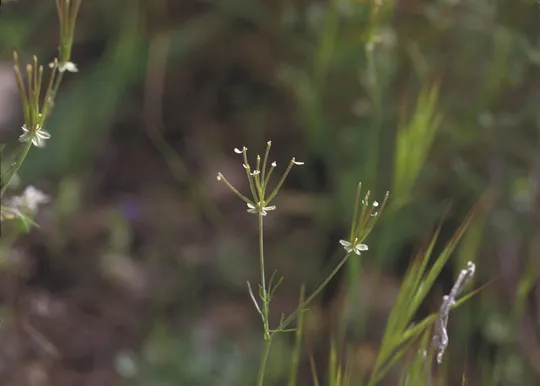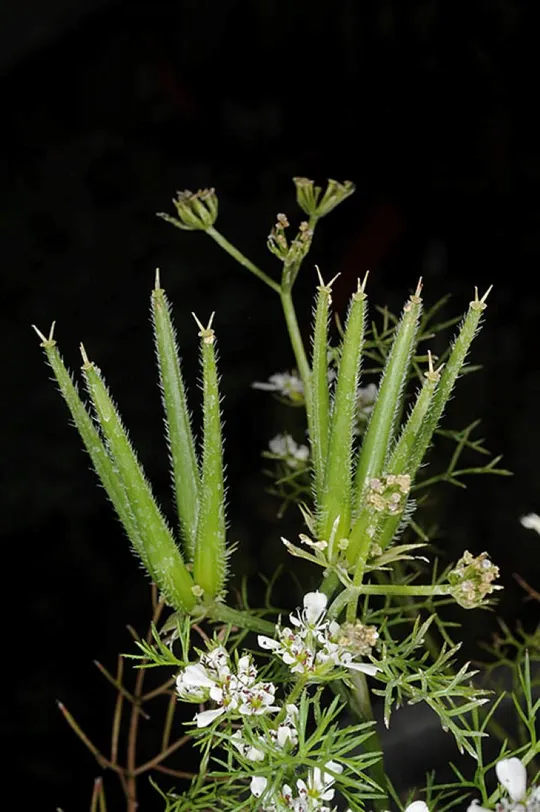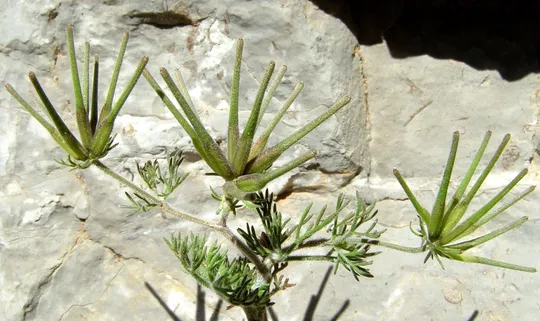Palestine Shepherd's Needle
Scandix palaestina
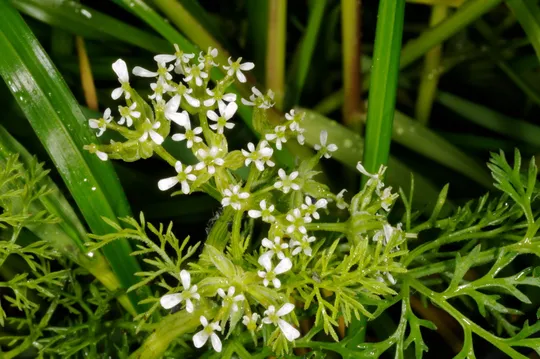

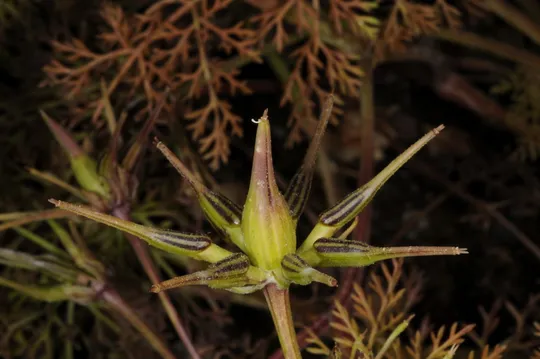
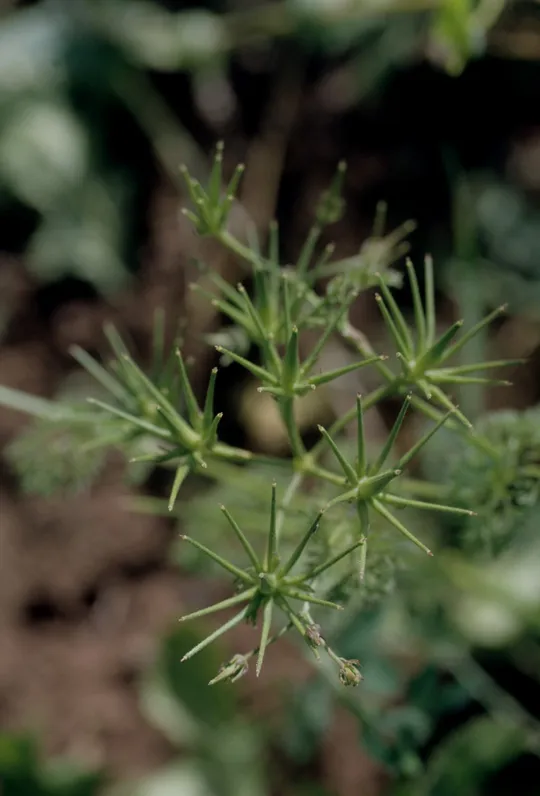
Scandix
palaestina is currently found in six regions: the Lower Galilee,
Jezreel Valley, Gilboa, Samaria, Golan and the Hula Valley. Eighteen sites were
documented in these regions, although there is concern that the species
survived in only 15. A number of new and important sites in northern Israel
were discovered during the rare plant survey in the 1990s. S. palaestina
grows in the Lower Galilee in the Wadi Tsalmon-Arbel section, in fields around
the Golani Junction, in the En Dor area and in the Bet Netofa Valley. In the
Jezreel Valley it is found at the HaTishbi Junction, Kfar Barukh and HaSargel Junction,
although it is extinct from the En Harod area, from where it was collected in
the 1920s. In the Gilboa area, S.
palaestina is found from Merav to Ma’ale Gilboa. In Samaria Y. Or,
M. Ron, S. Vered and A. Friedman first discovered it in 2007 near Ma'ale
Mikhmas. and in 2009 near Adei Ad. In the Golan S. palaestina
grows at a single site near the Iris grant-duffii
Reserve near Hispin; in the Hula Valley it was located in the fields of Ayelet
HaShahar although it has disappeared from Mahanayim. In the past it was recorded
and observed in 4 additional regions, from which it has become extinct and was
not found again: in the Upper Galilee (Mount Meron), the Carmel Coast (Atlit),
Sharon (Hadera) and Pleshet coast (Petah Tikva, Wadi Sorek and Yinon).
Relatively moist herbaceous areas, on heavy basaltic
soils or on alluvial soils. Now grows mostly as a weed on traditionally cultivated
agricultural fields or on fallow fields.
The genus Scandix
comprises some 20 species found in the Mediterranean Basin and the Canary
Islands in the west, on to Central Asia and the Himalayas in the east (Erhart
et al, 2008). S. palaestina and S.turgida belong to the section Cyclotaxis
in the genus Scandix that is characterized by different looking fruit on
the same umbellule. In the past, these species were described as a separate
genus – Cyclotaxis, although it is usually ascribed to the genus Scandix
(Zohary, 1972). In the remaining Scandix species in Israel, all the fruits
on the umbellule are more or less similarly shaped.
·
There is a strong decreasing trend in
the number of regions in which Scandix palaestina grows
in Israel. This is also true for the number of sites in those regions in which
it has survived.
·
The number of S. palaestina individuals varies between different sites – in some cases there are
between a few individuals up to tens of plants and in other cases, hundreds and
thousands of plants were counted in small areas.
·
The continuing decrease of traditional
agriculture is likely to lead to a further decline in the number of sites. Moreover,
the populations growing in fallow fields adjacent to areas of human activity will
be negatively affected by any changes in land use.
·
None of the S. palaestina sites is located
within declared nature reserves.
·
S. palaestina is an endemic species;
therefore, the local threat status is equivalent to the global threat status
for the species.
An area with heavy soil, which includes
fallow fields and traditionally cultivated fields, should be identified and managed
traditionally, with no deep plowing or pesticide use. This will allow the
species characteristic of this habitat, including Scandix palaestina to continue to exist. Suitable sites would be fields near the Golani Junction in the Lower
Galilee and near Adei Ad in Samaria, where other rare species grow. The
presence of S. palaestina at all its known sites
should be monitored annually.
Scandix
palaestina
is endemic to Israel and Jordan (Gil'ad and Ammon).
Scandix
palaestina is an
annual plant of heavy soils in fallow fields and traditionally farmed areas. It
is endemic to Israel and Jordan. The number of regions and number of sites are decreasing
due to the ongoing decrease of traditional farming and the development on
fallow fields near human settlements.
Erhardt, W., Goetz, E., Boedeker, N., and Seybold S., 2008. In: Zander Handwoerteebruch der Pflanennamen. Ulmer.
Current Occupancy Map
| 1000 squre meter pixel | 5000 squre meter pixel | 10000 squre meter pixel | |
|---|---|---|---|
| number of observations | 0 | 0 | 0 |
| in total pixels | 0 | 0 | 0 |
| Family | Apiaceae |
| Classification | On the endangered species list |
| Ecosystem | Mediterranean |
| Chorotype | Eastern Mediterranean |
| Conservation Site | Golani Junction Fields |
| Rarity |
1
2
6
|
|---|---|
| Vulnerability |
0
3
4
|
| Attractiveness |
0
0
4
|
| Endemism |
0
2
4
|
| Red number |
1
3.7
10
|
| Peripherality | 0 |
| IUCN category | DD EW EX LC CR EN VU NT |
| Threat Definition according to the red book | Vulnerable |
 Based on:
Based on:
